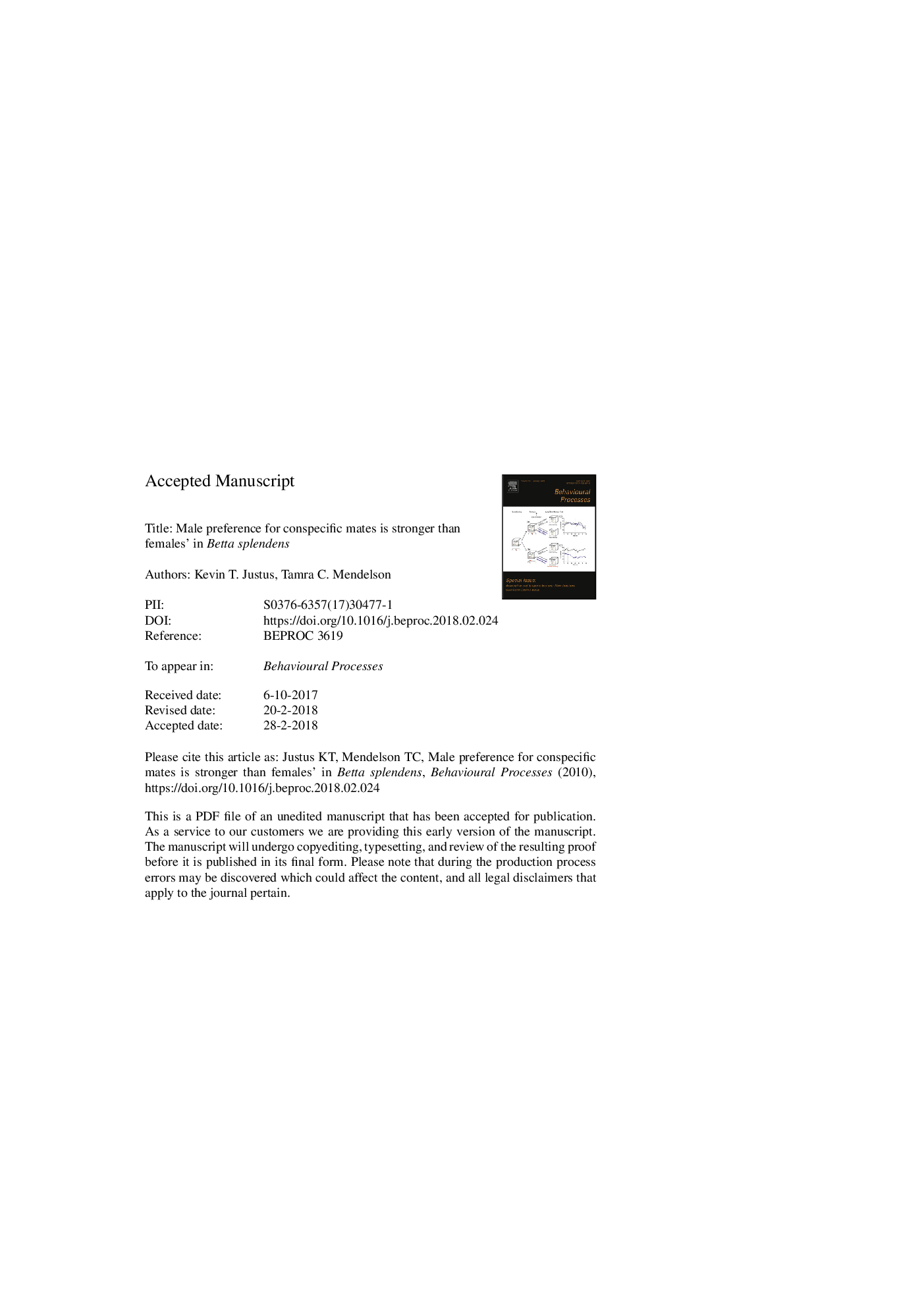| Article ID | Journal | Published Year | Pages | File Type |
|---|---|---|---|---|
| 8496958 | Behavioural Processes | 2018 | 21 Pages |
Abstract
The higher energetic cost related to female gamete investment is classically considered the driving force behind sexual selection. This asymmetric cost of reproduction is thought to cause female preference for elaborate male ornamentation. Subsequent co-evolution of female preferences and male ornaments is thought then to lead to a greater preference for conspecific mates in females as compared to males. Thus, female choice is classically assumed to contribute more than male choice to behavioral isolation between sexually dimorphic species. However, this hypothesis fails to account for the cost of maintaining a territory, building a nest, courtship displays, ornament investment, and parental care, as seen in males of the Siamese fighting fish, Betta splendens. Here we show that male B. splendens have a greater preference for female conspecifics than females have for male conspecifics, when given a choice between conspecifics and the allopatric Betta imbellis. We hypothesize that in B. splendens, the cost of mating may be higher for males than females, and predict that male choice would contribute to behavioral isolation upon secondary contact of wild populations.
Related Topics
Life Sciences
Agricultural and Biological Sciences
Animal Science and Zoology
Authors
Kevin T. Justus, Tamra C. Mendelson,
